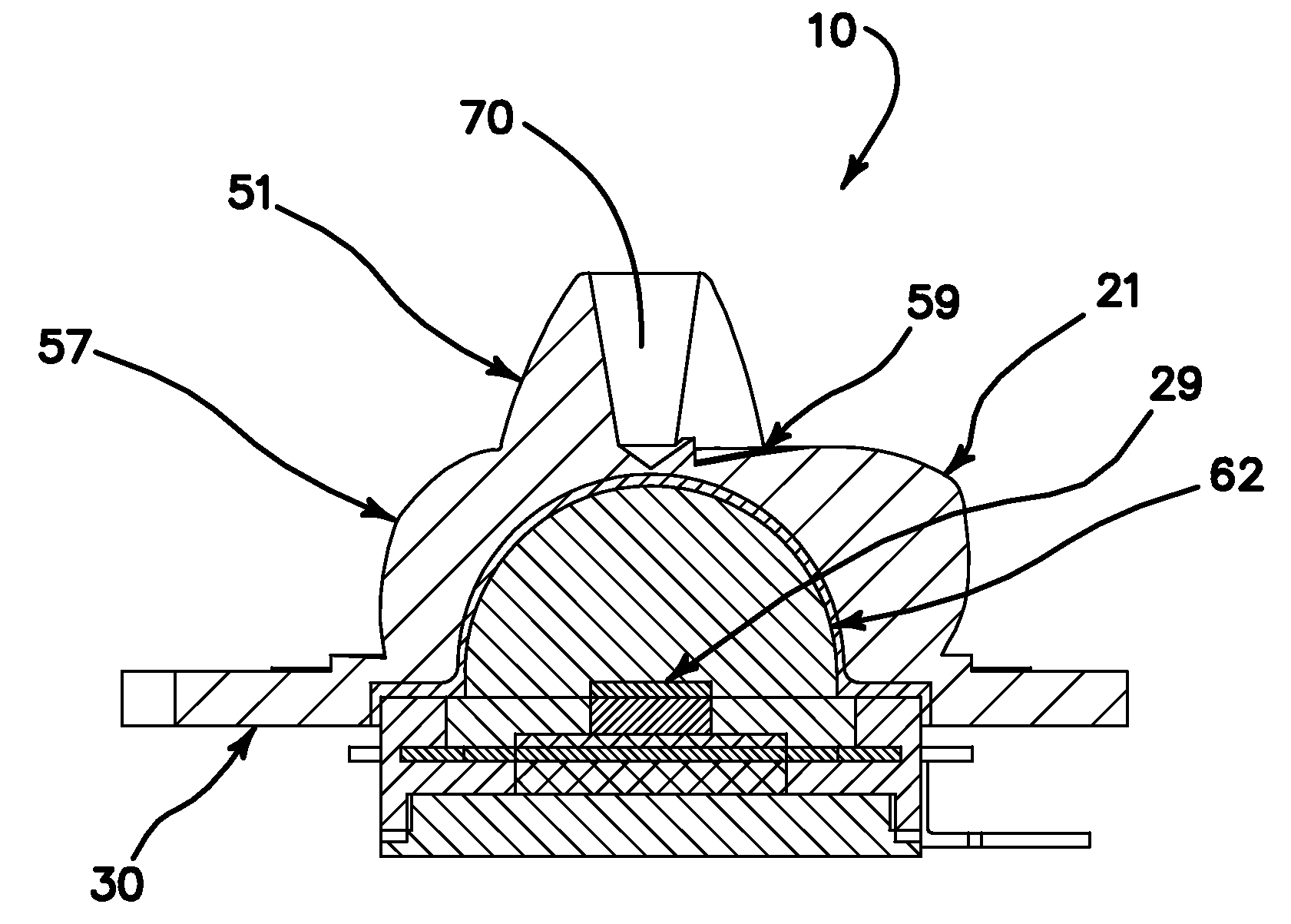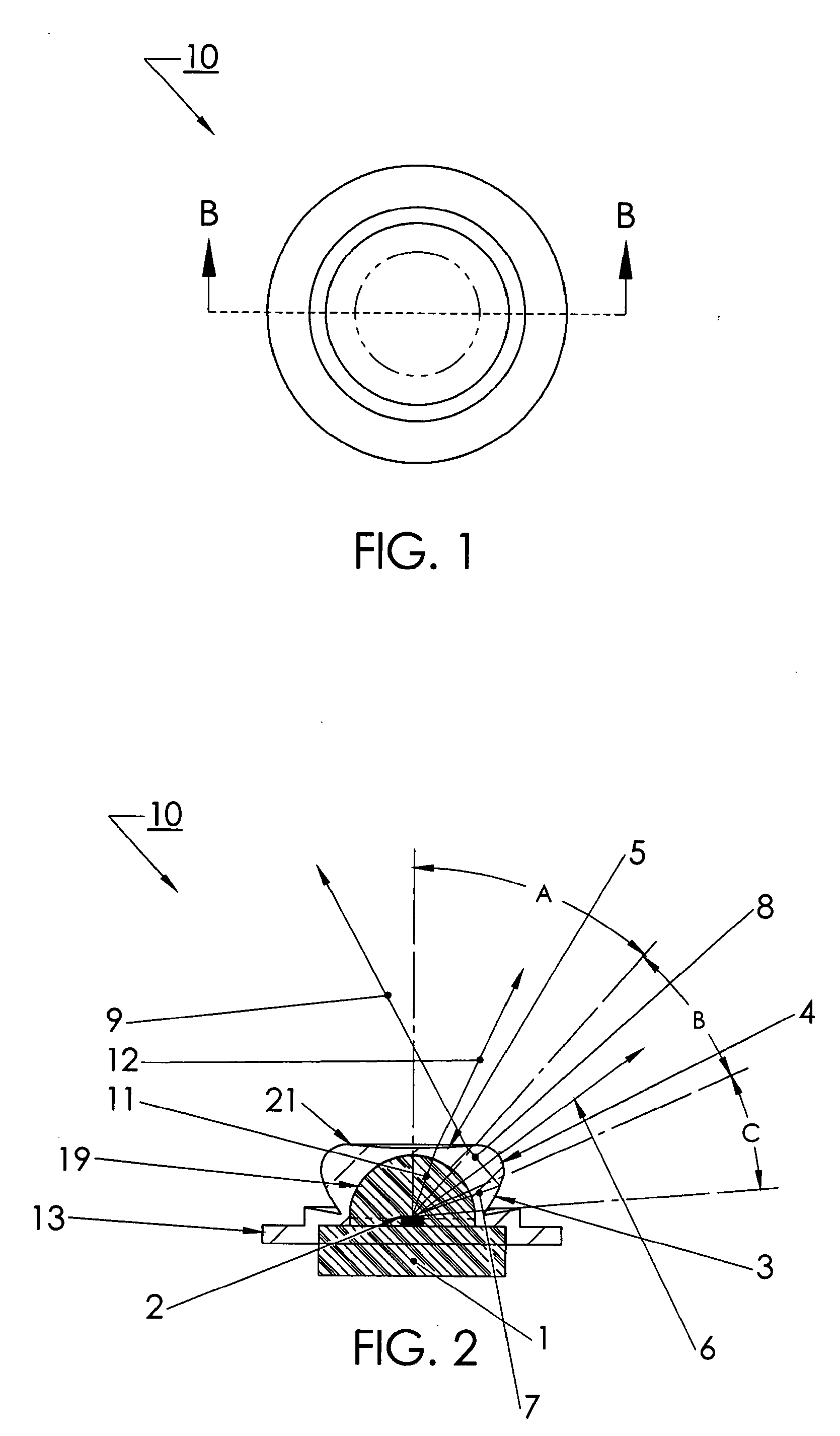LED device for wide beam generation
a technology of led devices and wide beams, which is applied in the direction of lighting support devices, lighting and heating apparatuses, instruments, etc., can solve the problems of high cost, waste of resources, and waste of resources, and achieve the effect of eliminating seams or optical discontinuities, high angle intensity wide beams
- Summary
- Abstract
- Description
- Claims
- Application Information
AI Technical Summary
Benefits of technology
Problems solved by technology
Method used
Image
Examples
Embodiment Construction
[0078]Before turning to the specifically illustrated examples shown in the drawings, we consider the various embodiments of the invention in more general terms. The illustrated embodiment of the invention uses light emitting diodes (LED), or other light sources, in a device that directs the energy from the LED into a smooth, broad beam. A broad beam can best be described as a beam which provides an illumination pattern on the surface intended to be illuminated, (e.g. the street, sidewalk, wall, etc.) that has a 50 percent maximum foot-candle measurement at an angle greater than 15 degrees from the centerline of the illumination pattern. This is referred to in the lighting field as the half-maximum point. A light source with a 15 degree half maximum measurement is also described as a 30 degree FWHM (Full Width, Half Maximum) light source.
[0079]Since light energy dissipates as the square of the distance from the source and there is additionally a cosine falloff based on the angle of i...
PUM
| Property | Measurement | Unit |
|---|---|---|
| angle | aaaaa | aaaaa |
| angle | aaaaa | aaaaa |
| azimuthal angle | aaaaa | aaaaa |
Abstract
Description
Claims
Application Information
 Login to View More
Login to View More - R&D
- Intellectual Property
- Life Sciences
- Materials
- Tech Scout
- Unparalleled Data Quality
- Higher Quality Content
- 60% Fewer Hallucinations
Browse by: Latest US Patents, China's latest patents, Technical Efficacy Thesaurus, Application Domain, Technology Topic, Popular Technical Reports.
© 2025 PatSnap. All rights reserved.Legal|Privacy policy|Modern Slavery Act Transparency Statement|Sitemap|About US| Contact US: help@patsnap.com



